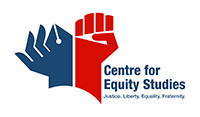RECENT MILITANT VIOLENCE AGAINST ADIVASIS IN ASSAM
Report of a Fact Finding Team
January, 2015
On December 23, the Bodoland autonomous region of Assam and some adjoining areas suffered an eruption of ethnic violence, particularly in the two districts of Kokrajhar and Sonitpur. These outbreaks of violence have been a disturbingly recurrent feature of the quarter-century long campaign for autonomy in the districts north of the Brahmaputra. Between January 10 and 12, a fact finding team constituted by the Delhi Solidarity Group comprising senior journalists Seema Mustafa and Sukumar Muralidharan, and human rights worker Harsh Mander, visited the villages ravaged by the killings as well as relief camps where terrified residents had fled. The team was assisted by Shefali from the Delhi Solidarity Group and Mangla Verma from the Centre for Equity Studies. In Guwahati, Kokrajhar and Sonitpur, the team was rendered invaluable support, assistance and guidance by Raju Narzary of North East Research & Social Work Networking (NERSWN) and Abdul Kalam Azad from Aman Biradari.
The Extent and Nature of Individual Tribal Land Alienation in Fifth Schedule States in India
A study undertaken by Centre for Equity Studies, New Delhi, India.
Mohd. Ali Faraz, Rajanya Bose, Sajjad Hassan and Sandeep Ghusale
March 2016
This is a report on the situation of tribal land alienation in India. Recent literature and public policy debates have focused attention on development- induced land alienation – large tracts of adivasi land acquired by state or negotiated by private parties, for setting up development projects, with no or very modest returns for adivasi, individually and collectively, and mostly, adverse after-effects. What has been missed in this, admittedly important debate, is the significant alienation that adivasis suffer across the country due to factors not necessarily directly related to large development projects and acquisitions of land related to those. Adivasi land is alienated also in small trickles, one family at a time, through the actions and inactions of state agents, lawyers, real estate brokers and land-hungry rich, acting in collusion, through individual purchases and acquisitions, mostly illegal and unrecorded, to deprive the often poverty stricken adivasis of what is her source, not just of sustenance but also identity and cultural moorings. Indeed, even the stories behind the relatively minuscule number of ‘legal’transactions between adivasis and non-adivasis, are in fact, studies in fraud and deceit, with adivasis being roundly shortchanged at every step. ‘Non-development’induced adivasi land alienation has been a common, often un-recorded and under-reported phenomenon, for generations.The cumulative scale of these, is equal if not wider, than that of development induced ones.
The Untold Story of Hindukaran (Proselytisation) of Adivasis in Dang: A Report
Citizen’s Enquiry Committee
2006
A people’s investigation was undertaken regarding plans to organise what is being described as a massive Shabri Kumbh in the tribal district of Dangs in Gujarat, on Feb 11-13, 2006. Organisations affiliated to the Sangh with the open support of the BJP state government are strenuously mobilising around 5 lakh adivasis and Hindutva activists to attend this gathering, in a remote and socially and environmentally highly sensitive and vulnerable forested region. This report presents the findings of this investigation.
